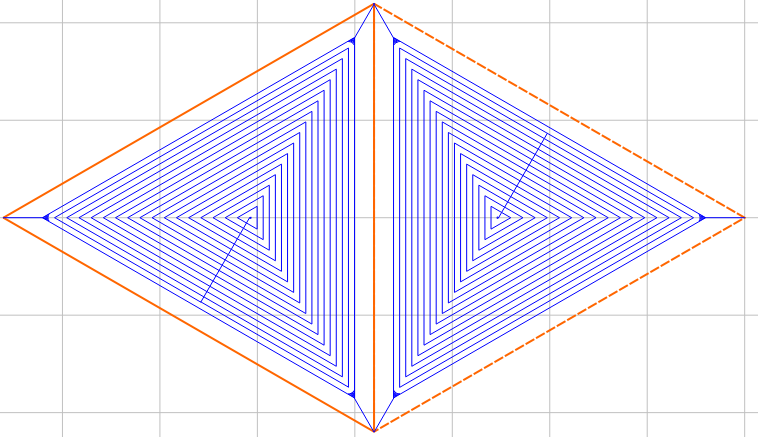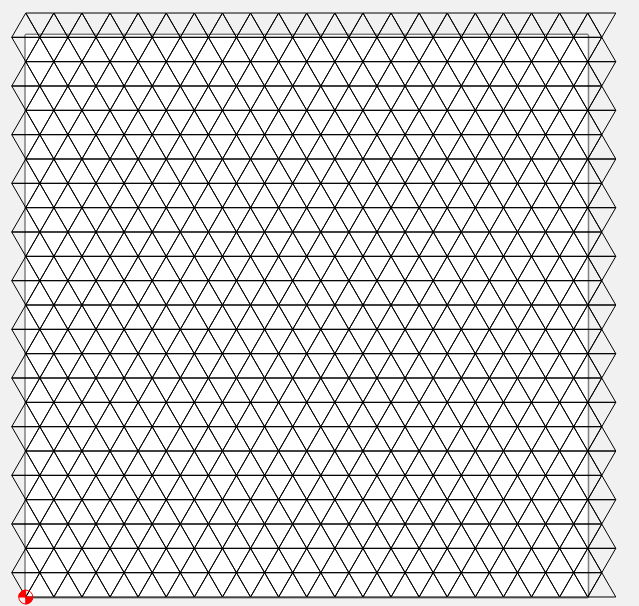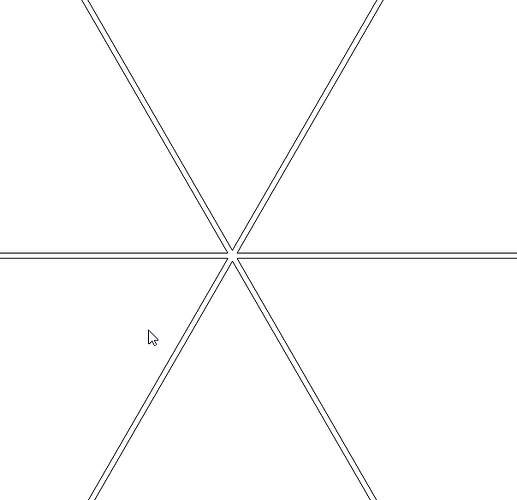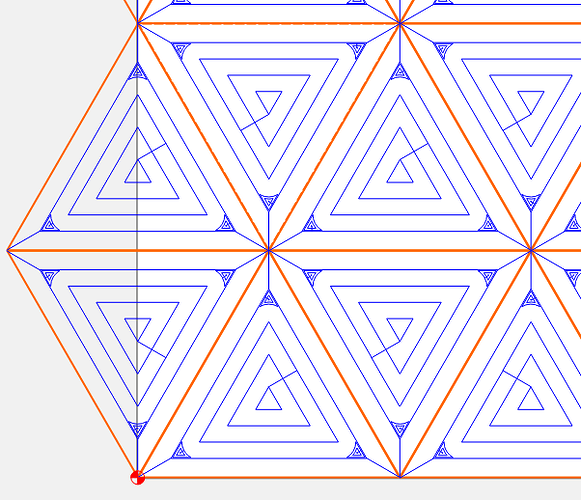I just created an advanced Vcarve toolpath (with enabled area pocket). Next I duplicated the object (it happened to be a triangle), and located the duplicate adjacent to the original (one edge overlaps precisely). Now the toolpath uses the union of the two triangles, rather than two separate Vcarves. Such behavior makes some sense for a pocket toolpath, but is problematic for what I’m trying to do, which is to leave a raised ridge (via chamfers) between many such triangles. I know I can do something similar with pockets and contours, but that loses the cleaner Vcarve corners. Is there any way to stop the union, short of creating separate toolpaths for each copied object (which just isn’t practical for the number of triangles I’m going to need)? Furthermore, the union operation seems to make a lot more sense for pocket toolpaths, maybe non-union should be an option for advanced Vcarve paths?
Thanks. Unfortunately, I’m trying to tessellate a rather large region and precise alignment of non-square objects becomes challenging with even the smallest gaps.
Select everything which exhibits this behavior, group it, inset it by some very small distance, delete the original group, re-assign the toolpaths.
Maybe use two layers with half in each layer and separate tool paths.
Previous discussion here:
This took me 5 minutes. Evenly spaced, 1" sides, 0.001 gap.
Can you share a picture or dimensioned drawing of what you are trying to achieve?
You folks are great a great resource. Clearly, you’ve offered three approaches that would work. That said, I was trying to achieve perfectly precise registration in both the X and Y axis, and while I believe it to be possible with offsets or insets, it is not simple when the figures that are not rectangular.
For what it is worth, I’ll share what I finally did… I created a 0.001 inset within the triangle and applied the toolpath to that inset. Next, I created a group consisting of the triangle and it’s inset. I copied this group with proper rotations to form a hexagon with each of the outer (non-inset) six triangles sharing the same center vertex. After ungrouping everything, I unioned the outer triangles to form a hexagon, then made a group of the six insets. The hexagons can precisely tessellate with snapping turned off so vertices snap to vertices of other hexagons. Finally, each hexagon gets a centered copy of the group of six insets. It’s a bit cumbersome, but precise. Furthermore, the process illustrates the utility of CCP features, and it only took a few minutes (not counting the hours I spent thinking about the problem).
BTW: along my journey, I discovered that reflecting a group consisting of a triangle (or other polygon) together with its inset fails to reflect properly. Perhaps this is a known bug?
It would have saved me a lot of work if Advanced Vcarve did not automatically construct toolpaths from unions. However, I would have missed the fun of searching for solutions using ideas from all of you.
Post a screen grab showing what does not reflect right and only those elements in a file?
I don’t think I need to send a file. Just follow these steps:
- Create a polygon an inch or two in “radius”. The size doesn’t really matter.
- Since the polygon defaults to a hexagon, change the number of sides to 3.
- Select the triangle, and create an inset inside with a distance of say 1/2 inch. (Again, size doesn’t seem to matter.)
- Create a group from the triangle and its inset.
- Now about the Y axis.
I was able to replicate this and am putting in a bug report on it now.
This topic was automatically closed after 30 days. New replies are no longer allowed.



